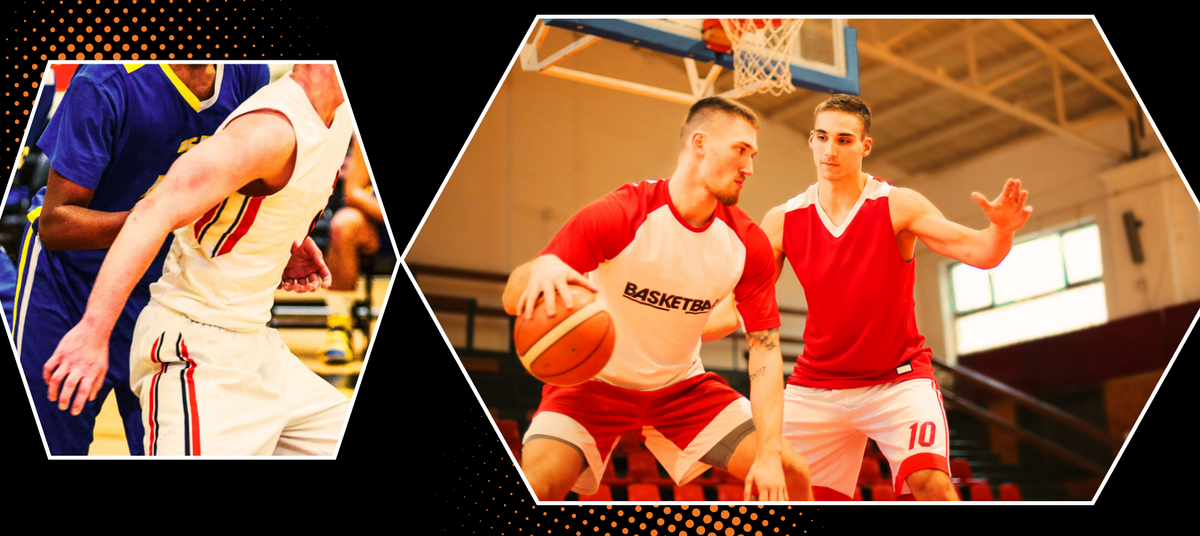
What is Boxing Out in Basketball? A Parent's Guide
|
|
Time to read 4 min
|
|
Time to read 4 min
As a parent of young basketball players, you’ve likely heard the term “boxing out.” But what is boxing out in basketball? It's a core fundamental that can decide a basketball game's outcome. It’s more than just physical play; it’s about strategic positioning and securing rebounds. Let's explore this critical skill.
This fundamental skill isn’t flashy. You won’t hear kids boasting about their box outs. However, the effort displayed under the basket speaks for itself.
Boxing out means positioning yourself between an opponent and the basket after a shot attempt. You create a barrier with your body, effectively sealing off the opposing player from the rebound. This makes it easier for your team to secure rebound and begin transitioning into offense, setting up an entry pass, and initiating plays.
Boxing out involves a blend of positioning, awareness, and controlled physicality. Your secure rebound denies the offensive player a second chance and boosts your team’s chances of possession, making your box outs an effective box. While it may seem straightforward, consistent execution is crucial in a basketball game.
Offensive rebounds often lead to second-chance points, extending possessions and frustrating defensive efforts. Defensive rebounds help end your opponent's possession and start yours. Top defensive teams prioritize boxing out.
Even youth games see numerous shot attempts. Each miss creates a loose ball. Boxing out helps your team gain a significant edge by gaining possession of most rebounds. A rebound can shift momentum and create scoring chances. Consistently boxing out is key to success in basketball games.
Assume an athletic stance: feet shoulder-width apart, knees bent, and back straight. Position yourself between the offensive player and the basket as the shot goes up. Initiate contact (chest to chest) to impede the offensive player’s ability to grab the offensive rebound.
For close-range shots, anticipate shorter rebounds, primarily within the paint. Be ready to react quickly.
Rebounding paths depend on the shot's distance and type. A missed 3-pointer, for instance, can bounce almost anywhere. To learn where rebounds are most likely to go for certain shot attempts check out resources online, including simply set plays.
Communicate. Yell “Shot.” to alert teammates. This fosters team awareness and encourages a collective focus on boxing out during rebounding drills and games.
Your initial aim isn't necessarily grabbing the rebound yourself. Focus on impeding the opponent, creating an opportunity for a teammate. To develop these good habits check out resources online for ideas.
Establish firm contact as the shot leaves the shooter's hand. Quickly turn and face the basket after making contact, maintaining your position.
Long rebounds require patience. Keep pushing your opponent towards the baseline, reducing offensive chances.
Don't turn towards the basket immediately. Establish contact first, or your opponent could slip past.
Finally, jump for the rebound with two hands high. Your box out is not over after the initial contact. Finish the play.
Boxing out in zone defense is trickier. Player assignments change, making it difficult to track opponents. However, a strong emphasis on boxing out is even more important in zone defense. Each defensive player focuses on pushing their opponent outward.
Defensive players think in terms of a 'rebound radius.' This radius changes based on the shot type. For shorter shots, the radius is smaller, concentrating around the basket. For longer shots, the radius expands. Players adjust their positioning and physicality based on this dynamic radius.
Your box out might not always result in a personal rebound. It might create a better rebounding chance for a teammate. The biggest challenge lies in coordinated execution and consistent application throughout the game.
There's no specific 'box out rule.' Boxing out isn't a foul in itself. However, fouls committed *while* boxing out (pushing, holding, tripping) are penalized. Focus on positioning, not excessive force.
Boxing out involves establishing a position between an opponent and the basket after a shot attempt. The goal is to impede the opponent's rebounding effort while creating an opportunity for your team.
Boxing out is vital. It secures defensive rebounds, ends opposing possessions, and prevents second-chance points. Offensive rebounds create additional scoring opportunities.
NBA box out rules are consistent with standard basketball rules. There isn't a distinct 'box out' rule. The focus remains on avoiding fouls *within* the act of boxing out. Excessive physicality, such as shoving or holding, is penalized. These calls can greatly impact the course of an NBA game.
Boxing out in basketball is the act of strategically positioning yourself to gain a rebounding advantage after a shot attempt. It involves making initial contact with the offensive player, then pushing them away from the basket, clearing the path for you or a teammate to grab the rebound. It's a combination of physicality, positioning, and anticipation.
Boxing out isn’t solely about strength or size. It demands anticipation, discipline, and consistent effort on every possession. This fundamental skill can significantly influence a game's outcome by helping your team secure those crucial rebounds, which often separate the winners from the losers.
Boxing Out in Basketball. Boxing Out in Basketball. Boxing Out in Basketball. Boxing Out in Basketball. Boxing Out in Basketball. Boxing Out in Basketball. Boxing Out in Basketball. Boxing Out in Basketball. Boxing Out in Basketball. Boxing Out in Basketball. Boxing Out in Basketball. Boxing Out in Basketball. Boxing Out in Basketball. Boxing Out in Basketball. Boxing Out in Basketball. Boxing Out in Basketball. Boxing Out in Basketball. Boxing Out in Basketball. Boxing Out in Basketball. Boxing Out in Basketball. Boxing Out in Basketball. Boxing Out in Basketball. Boxing Out in Basketball.
This site requires cookies in order to provide all of its functionality.
